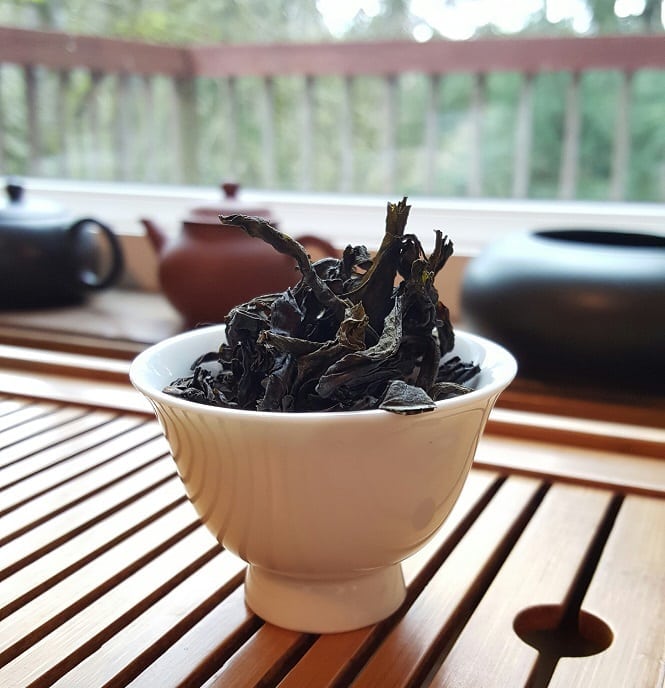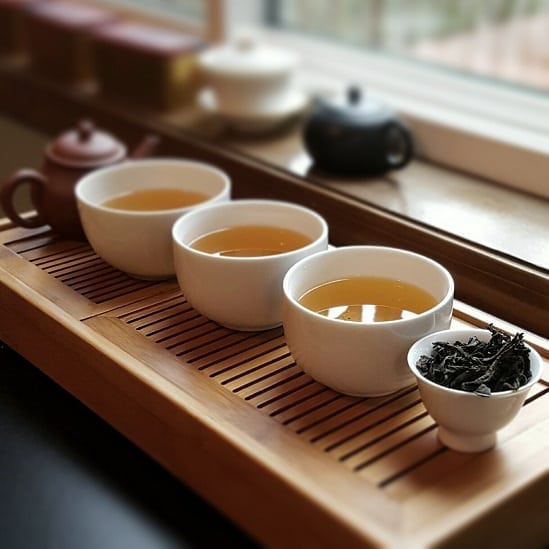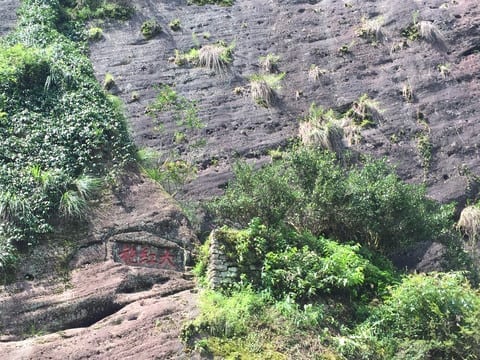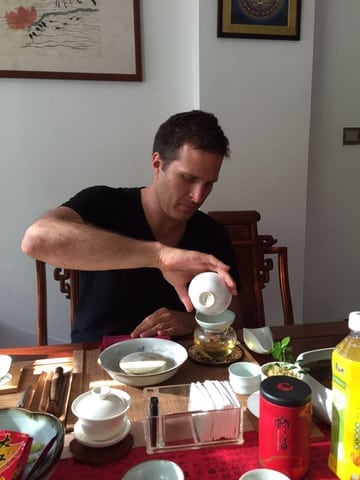I think I’ve mentioned this before, but Rou Gui was the first Wuyi oolong (or Yancha) that I ever liked.

Image mooched from the Almighty Wiki.
Before a certain Da Hong Pao back-flipped my palate, I never really took a liking to Wuyi rock oolongs. They always tasted like . . . well . . . roasted rocks. In leaf form. Rou Gui, while as “burnt”-looking as the rest of them, seemed different. Not sure why, but there was room for more subtlety in the palate delivery.
Since then, I’ve come to appreciate a myriad of Wuyi oolongs. So much so, that poor ol’ Rou Gui kind of got left in the dust. Tie Luo Han took point as my overall favorite. Then I got an e-mail from Jeff Kovac of Four Seasons Tea some random month in 2016. He wondered if I got to one of the samples he sent some months back, particularly a Rou Gui called “Niu Lan Keng”.
I told him I hadn’t (but left out the part where I didn’t plan to). My exploration of Rou Gui as a tea was—so I thought—finished. However, Jeff re-emphasized that this stuff was special. It hailed from the same growing region as the really special Da Hong Pao he passed my way did—Zhengyan. Specifically, the Niu Lan Keng growing region.
Because the growing region was so narrow in parts, not very much was produced. Some farms lay between ravines of mountains. Tea plants grew in ravine corridors. Like this:

Image owned by Four Seasons Tea.
With low yields on a regionally specific tea came a high price tag. This tea cost even more per gram than “Mother Tree” Da Hong Pao. That, in and of itself, was astounding.
Sometime in autumn of last year, I finally got around to brewing it up. Was it at all special? I aimed to find out.

Most Wuyi oolongs I’ve come cross all have similar appearances. The leaves are long, twisty, and (for the most part) soot black—usually a result of the charcoal roasting. I was surprised in two ways with this one: (1) Some of the leaves actually had a shade of beige or green to their color. And (2) when I tore open the bag, all I could smell was straight butter. Well . . . butter that’d been roasted on charcoal. (Is that even possible—roasting butter on charcoal? Someone get on that.) Point being, it was a lovely visual and visceral bouquet. Yes, you’re catching me using the word “bouquet” in one of these yarns. Don’t get used to it.
For brewing, I approached it as . . .y’know what? I wasn’t really paying all that much attention. I knew I wanted to use a yixing pot; I know I wanted three or four successive steeps. Didn’t really care what leaf amount either. I guessed that I put about a tablespoon of leaves in the yixing pot, and I suppose each steep was about thirty-to-forty seconds. But—honestly—I didn’t care. The very essence of “gongfooling” as opposed to gongfu.
Each infusion was the color of steampunk magic brass. Not to be confused with normal brass, which is a bit dull on display. The liquors were bright, spry and . . . well . . . downright magical-looking. Magic brass; I’m sticking to that. The “roasted butter” showed up in the steam smell, along with fruit and roasted poetry. The taste was . . . oh my lord . . .

Stone fruit wine. I really don’t need to go any further than that. No, not plum wine. That’s common. I’ve never tasted anything like this, but winy notes were all over the place—but thankfully without any of that tannic, corky crap. I don’t think I’ve ever tasted a Wuyi oolong that was this tart and fruity, but in a refined and experienced sort of way. I certainly have never had a Rou Gui that was like this. Further infusions got even sweeter.
I guess I did have more to say about Rou Gui. A sweet taste was the sweetest retribution. This expensive beauty killed me with kindness. Revenge is a cup of tea best served cordially.
To by the Niu Lan Keng Rou Gui, go HERE.



